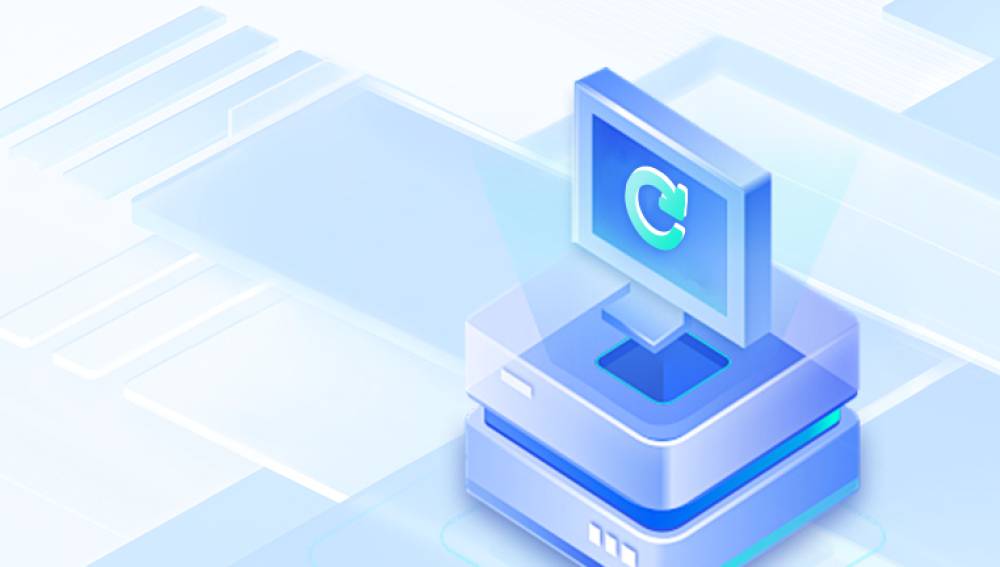Windows 10 is a powerful operating system used by millions across the world. While it is robust and efficient, it is not immune to corruption. Over time, system files can become damaged due to software conflicts, hardware failures, power outages, or even malware. When core Windows files are corrupted, users may experience frequent crashes, sluggish performance, boot errors, or features that simply stop working.
File corruption refers to errors in a file's structure that make it unusable or unreliable. In the context of Windows 10. file corruption can involve system files that are essential for normal operation.
Common Causes of Corruption:
Sudden power loss or improper shutdown
Malware and viruses
Hardware failure (e.g., hard disk or RAM issues)

Incomplete Windows updates
Faulty software installations
Corruption during file transfers
Corrupted system files may affect Windows services, prevent you from installing updates, or cause the operating system to crash or boot improperly.
Symptoms of Corrupted Windows Files
Recognizing the warning signs early can prevent further system damage. Common symptoms include:
Frequent system crashes or blue screen errors (BSOD)
Applications failing to launch or crashing during use
Missing or unresponsive Windows features (e.g., Search, Taskbar)
Boot errors or the system failing to start properly
Error messages like "Windows Resource Protection found corrupt files but was unable to fix some of them"
Files that refuse to open or return strange errors
Step-by-Step Methods to Repair Corrupted Windows 10 Files
Step 1: Backup Important Data
Before you attempt any repairs, back up your files. Although the methods described here are generally safe, system-level repairs can occasionally lead to unintended issues. Use an external hard drive, cloud storage, or Windows’ built-in backup tool to protect your documents, photos, and other important files.
Step 2: Use System File Checker (SFC)
SFC (System File Checker) is a command-line tool built into Windows 10 that scans system files and replaces corrupted or missing files with correct versions from the Windows cache.
How to Use SFC:
Press Windows + X and select Command Prompt (Admin) or Windows PowerShell (Admin).
Type the following command and press Enter:
bash
CopyEdit
sfc /scannow
Wait for the scan to complete (this can take 10–20 minutes).
Review the results:
No issues found – Your system files are fine.
Windows Resource Protection found corrupt files and repaired them – The issue is resolved.
Windows Resource Protection found corrupt files but could not fix some of them – Proceed to Step 3.
Step 3: Use DISM (Deployment Imaging Service and Management Tool)
If SFC cannot repair all files, use DISM, which downloads and repairs system images from Microsoft’s servers.
How to Use DISM:
Open Command Prompt as Administrator.
Enter the following commands, pressing Enter after each:
swift
CopyEdit
DISM /Online /Cleanup-Image /CheckHealth DISM /Online /Cleanup-Image /ScanHealth DISM /Online /Cleanup-Image /RestoreHealth
Wait for the operation to complete (may take up to an hour).
Reboot your system.
Run sfc /scannow again to verify repairs.
DISM can resolve underlying issues that prevent SFC from completing its task.
Step 4: Check Your Hard Drive for Errors
If your disk has bad sectors, it can corrupt files during read/write operations. Use Windows’ Check Disk (chkdsk) utility to scan and repair file system errors.
How to Run CHKDSK:
Open Command Prompt as Administrator.
Type the following command:
bash
CopyEdit
chkdsk C: /f /r /x
/f fixes errors
/r locates bad sectors and recovers readable information
/x forces the volume to dismount before the process begins
If prompted, press Y to schedule the scan during the next restart.
Restart your computer.
This can take a while depending on the size of the disk and number of errors.
Step 5: Use Windows Startup Repair
If your PC fails to boot due to corrupted system files, use Startup Repair, a built-in recovery tool.
Steps:
Boot from a Windows 10 installation USB/DVD or use the Advanced Startup option:
Hold Shift while clicking Restart from the Start menu.
Navigate to:
Troubleshoot > Advanced Options > Startup Repair
Select the OS to repair.
Let Windows diagnose and fix boot-related issues.
Startup Repair can fix MBR corruption, missing boot files, and other startup-related errors.
Step 6: Run System Restore
If you recently installed software or updates that caused system corruption, System Restore can roll your computer back to a previous, healthy state.
To Use System Restore:
Search for “Create a restore point” in the Start menu.
Click System Restore under the System Protection tab.
Choose a restore point (dated before the issue began).
Follow the prompts to complete the restoration.
System Restore does not affect your personal files, but it can remove apps and drivers installed after the restore point was created.
Step 7: Reset Windows 10 (Keep Files or Remove Everything)
If none of the above methods work, use the Reset This PC feature to reinstall Windows 10.
To Reset Windows:
Go to Settings > Update & Security > Recovery.
Under Reset this PC, click Get Started.
Choose either:
Keep my files – Resets system files but keeps your personal files.
Remove everything – Full reinstall (recommended only as a last resort).
Follow the prompts to complete the reset. Windows will reinstall itself fresh from a local image.
Step 8: Use Windows Update to Replace Corrupted Files
Windows Update not only delivers security patches but also repairs corrupted components. Sometimes, simply installing the latest updates can resolve issues.
Steps:
Go to Settings > Update & Security > Windows Update.
Click Check for updates.
Install all pending updates and reboot your PC.
If Windows Update fails, run the Windows Update Troubleshooter to diagnose and fix update-related issues.
Step 9: Use Windows Memory Diagnostic Tool
Bad memory (RAM) can cause file corruption. Test your RAM with the built-in memory diagnostic tool.
Steps:
Search for “Windows Memory Diagnostic” in the Start menu.
Select “Restart now and check for problems.”
Let the tool run during startup.
If errors are detected, consider replacing your RAM module.
Step 10: Scan for Malware or Rootkits
Some corruption is caused by malware or rootkits modifying system files. Run a full scan with your antivirus or use Microsoft Defender Offline Scan:
Steps:
Go to Settings > Update & Security > Windows Security > Virus & threat protection.
Click Scan options.
Select Microsoft Defender Offline scan and click Scan now.
Your PC will reboot and scan for deeply embedded malware.
Step 11: Use Event Viewer for Diagnostics
If corruption continues, Event Viewer can help trace the source of the problem.
Steps:
Press Windows + X, then choose Event Viewer.
Check under Windows Logs > System for red error icons.
Look for file-related errors or system warnings that may indicate corruption sources.
You can use the error codes or messages to guide further troubleshooting.
Preventing File Corruption in Windows 10
Once your system is clean and repaired, it’s important to take steps to prevent future issues:
Always use "Shut Down" or "Restart" instead of force powering off.
Keep your system updated. Install the latest Windows updates regularly.
Install reliable antivirus software to prevent malware infections.
Avoid suspicious downloads or unverified apps.
Use an Uninterruptible Power Supply (UPS) if power outages are common.
Create restore points before major installations.
Back up important files regularly using OneDrive, an external drive, or third-party software.
Run regular disk and memory checks using CHKDSK and Windows Memory Diagnostic.
When to Consider a Clean Install
If you’ve tried all the repair options and your system is still unstable, a clean install of Windows 10 may be your best option.
Download the Media Creation Tool from Microsoft’s website.
Create a bootable USB or DVD.
Back up your files.
Boot from the USB and select Custom Install to perform a clean setup.
This gives you a fresh start with new, uncorrupted system files.
Corrupted system files in Windows 10 can lead to a range of problems from minor glitches to total system failure. Thankfully, Windows offers multiple tools such as SFC, DISM, CHKDSK, Startup Repair, and Reset options to diagnose and fix these issues without requiring a complete reinstall in most cases.




